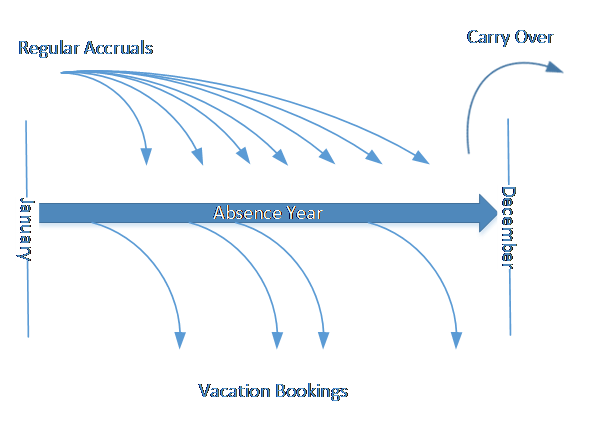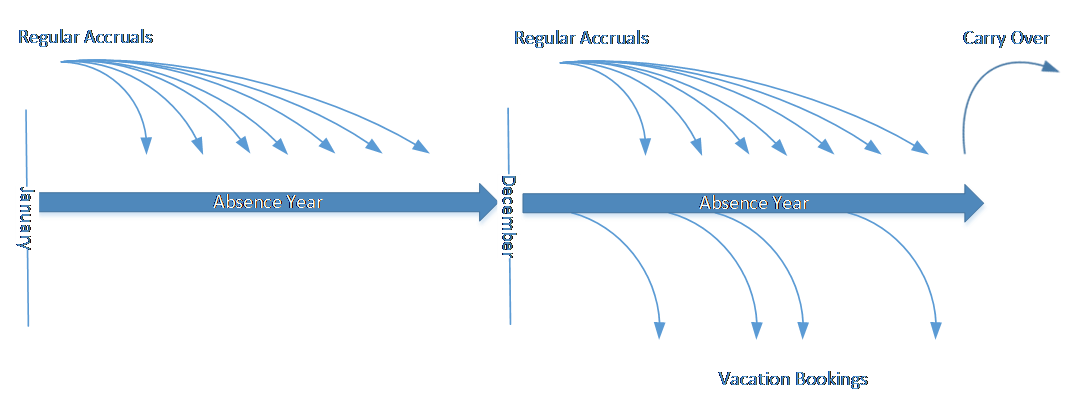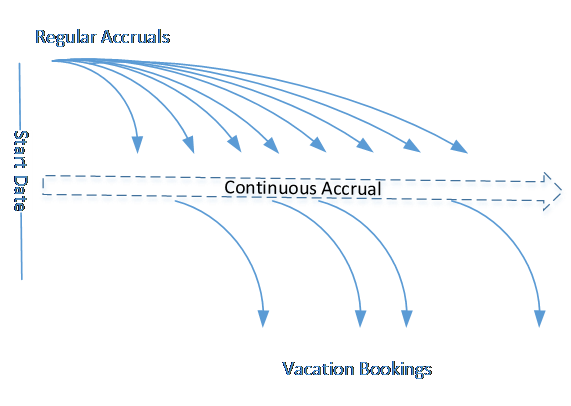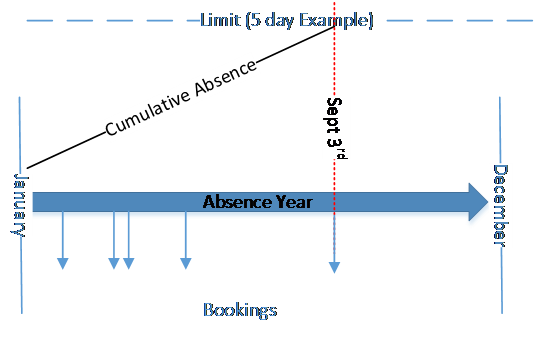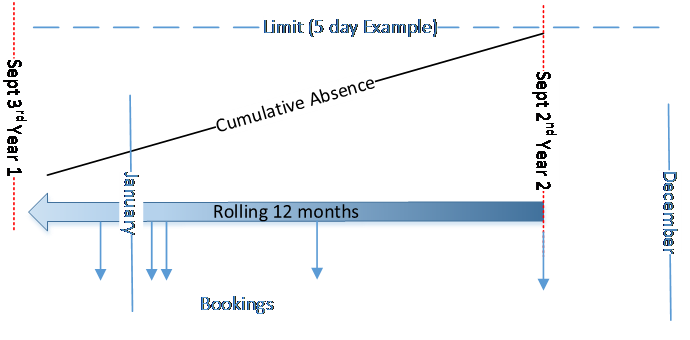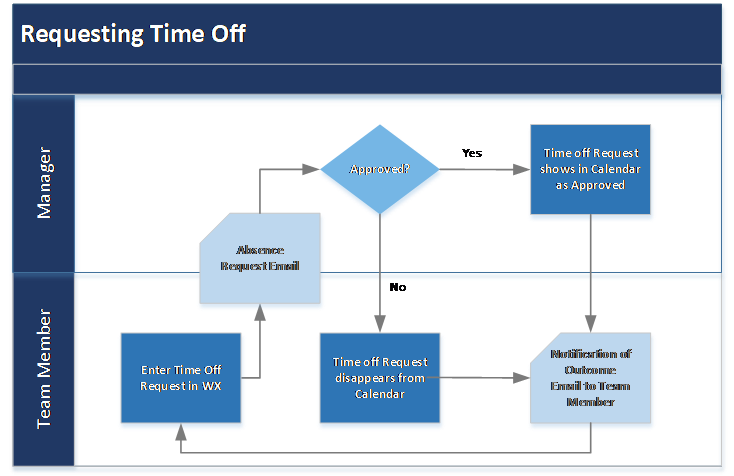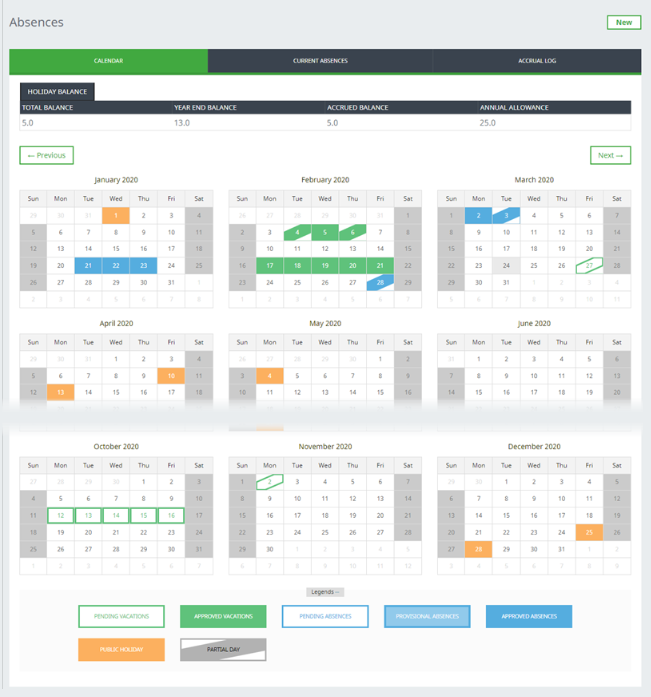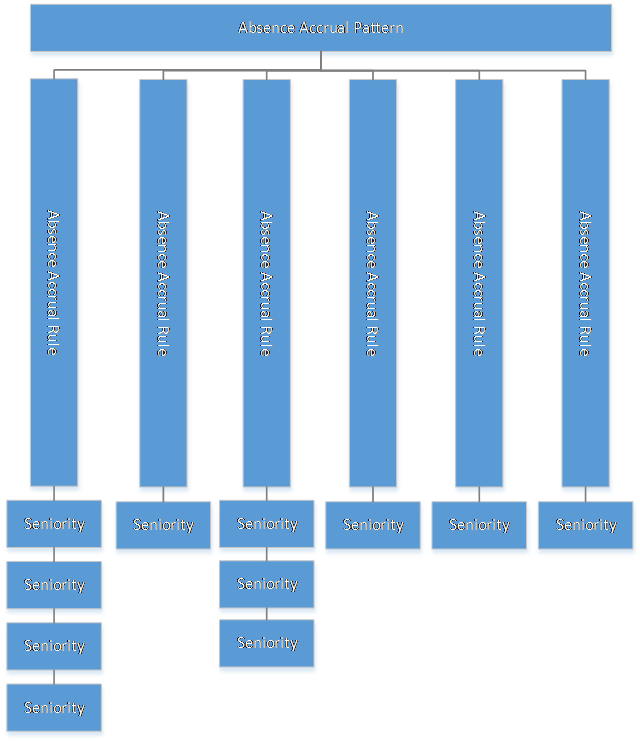Absence and Vacation |
Business Context
Overview
Absence and Vacation enables organizations to:
- Create highly configurable absence rules for accruals and limits tailored to country-specific and company-specific practices.
- Have team members and managers requesting and approving absence and vacation via self-service.
- Generate reports on absence and vacation.
- Enforce limits on team members requesting absences via WX, while retaining full control of absence, including exceptions, in the HR Manager portal.
Organizations can share absence booking data and balance information by employees with payroll stakeholders via Payflow. Alternatively, the Sage People API can be used as a method to retrieve the following kinds of absence data:
- Absence records
- Absence balances
- Timesheets
Features for different user groups
| User group | Features |
|---|---|
|
Team members |
|
|
HR |
|
|
Manager |
|
Assumptions for Absence and Vacation
- The payroll system carries out payroll calculations. Sage People does not perform any transformation on absence types such as breaking down maternity leave into company, statutory and unpaid components.
- The approver for absence and vacation is a team member’s line manager.
- Each absence accrual pattern operates in only one rate unit, days or hours but not a combination of both.
Typical use cases
Sage People supports the following common models for configuring absence and vacation:
-
Accrued absences
-
Basic annual accrual
-
Deferred accrual
-
Continuous accrual
-
-
Non-accrued absences
-
Based on annual reset
-
Based on a rolling period
-
Accrued absences
The time off entitlement is accrued over time which team members can then book to take using the WX self service portal. Organizations set rates, periods, carry over and minimum and maximum values for the accrual.
Typical examples of accrued absences include Annual Leave, Vacation, PTO, RTT, and Long Service Leave.
Sage People supports accrual available to use in the same year and deferred accrual where the entitlement is accrued in one year and available to use in the next year.
Basic annual vacation accrual
Commonly used in the UK, Ireland, and the United States. The following diagram illustrates how the entitlement is accrued and used during a year:
- Annual Leave or Vacation accrues monthly from the hire date.
- Leave year resets on a specific date, such as January 1, or on the anniversary of hire date.
- Employees can take Annual Leave or Vacation prior to it accruing as long as it does not exceed their annual allowance.
Deferred annual vacation accrual
Commonly used in countries such as France and Belgium. The following diagram illustrates how the entitlement is accrued in one year and available to use in the next, while also accruing the entitlement for the following year:
-
Annual Leave or Vacation accrues monthly from the hire date.
-
Annual Leave or Vacation accrued during the accrual year is available for employees to take in the following accrual year.
-
Employees can take time off in the accrual year, but depending on the company policies it may be unpaid leave or result in the employees owing a debt to the company.
Continuous vacation accrual
Commonly used in Australia. The following diagram illustrates how the entitlement is accrued at a set rate without any balance resets:
- No defined leave year and no reset dates.
- Annual leave accrues on a continuous basis.
Non-accruing absences
Typically used for absence reasons such as sickness, parental leave, jury service, or unpaid leave, the entitlement for these absences is not accrued. Organizations set limits according to how many days or instances employees can book within a set period. Limits are applicable in the self-service portal only, exceptions can be managed by HR.
Absence limited by annual reset
In this model, employees have access to a set amount of time off within a period, after which the pot resets, as illustrated by the following diagram:
-
Ability to book these types of absences can be limited to a set number of days or a set number of occurrences during the absence year.
-
Limits can be reset on a fixed date, such as January 1, or the anniversary of the hire date.
-
For example, if Personal Leave is limited to 5 days in the calendar year and the team member takes the 5th day on September 3, they cannot take more Personal Leave in that year until the available balance resets on 1 January.
Absence limited by rolling period
In this model, employees have access to a set amount of time off within a rolling period, as illustrated by the following diagram:
-
Ability to book absence is limited to a set number of days or number of occurrences within the period.
-
Limits are applied on a historic rolling basis.
-
For example, if Personal Leave is limited to 5 days in a rolling 12-month period and the team member has taken 5 days in the past 12 months, they will not be able to take another one until there have been fewer than 5 Personal Leave days taken in the past rolling 12 months.
How customers use Absence and Vacation
-
Team members request time off in the WX self service portal or in the mobile app. For more information see Booking an absence.
-
The team member's manager receives an email notification of the request and can now approve or reject it in the WX self service portal. For more information see Review and approve time off requests.
After approving, the status of the time off request changes to Approved, the team member is notified, and the request shows as approved in the WX absence calendar. If the request is rejected, the team member is notified and the request is removed from their WX absence calendar:
Team members can view their time off in a calendar view in the Time Off process in the WX self service portal. The previous screenshot is an example of the calendar, which includes:
- Current and projected vacation balances. Your administrator can control which balances are displayed.
- A full calendar for the current year.
- Links to the previous and next years.
-
Highlights for vacation and other types of absence, complete with a key.
The partial day legend is gray but partial days in the calendar follow the colors of the absence types.
Highlights can also indicate public or national holidays set up for your organization.
- All current absences displayed with duration, reason, and status, and a View Details link for each. Current Absences includes:
- Vacation from the last 12 months and booked for any time in the future.
- Absence from the last six months and for 12 months in the future.
Managers can view the time off of their team in a team view and dig into the time off requests to see the details, for more information see Viewing vacation and absence for your team.
In Sage People, the reasons team members can select for time off requests are defined in absence accrual rules, and the rules are grouped together into absence accrual patterns. Absence accrual patterns can be assigned to groups of employees, or to team members directly. Typically, there is often an absence accrual pattern for each country a business operates in, and sometimes multiple absence accrual patterns within a country if different rules apply to different groups of employees.
Each absence accrual pattern has one absence accrual rule for each reason a team member with that pattern can request time off. The absence accrual rule contains settings which determine the rules that apply for that time off reason.
Each absence accrual rule has one or more absence accrual seniorities that determine the rates that apply to that reason for time off. The relationships between absence accrual patterns, absence accrual rules, and absence accrual seniorities is illustrated in the following diagram:
Absence accrual patterns are typically assigned to a policy. This applies the absence accrual rule to all team members linked to an HR Department associated to the policy. For this reason, absence rules can affect the way your HR Department are structured, for more information see Business Context for HR Departments. Assigning a Policy Override to a team member keeps them in the HR Department but applies the directly assigned policy and its related settings including the absence accrual pattern to the team member. As an exception, you can assign an absence accrual pattern to a team member’s employment record.
All new Sage People orgs contain a number of sample absence accrual patterns designed to provide simple out-of-the-box approach for a given country. Where required customers can modify absence reasons and logic to suit their needs.
The following absence accrual patterns are delivered with all new orgs (descriptions last updated September 2024). For more details about the default settings in these patterns, see Default absence accrual patterns.
-
Australia (Generic)
-
Accrued absence accrual rules:
-
Annual Leave
-
Long Service Leave
-
Personal (Carers) Leave
-
-
Non-accrued absence accrual rules:
-
Bereavement Leave
-
Birthday Leave
-
Jury Service
-
Leave Without Pay
-
Special Leave
-
Time off in Lieu
-
Unpaid Parental Leave
-
Unpaid Personal Leave
-
-
-
France (Generic)
-
Accrued absence accrual rules:
-
Annual Leave
-
RTT
-
-
Non-accrued absence accrual rules:
-
Compassionate Leave
-
Jury Service
-
Maternity
-
Paternity
-
Sickness
-
Unpaid Leave
-
-
-
Germany (Generic)
-
Accrued absence accrual rules:
-
Annual Leave
-
-
Non-accrued absence accrual rules:
-
Care of the Sick Child
-
Funeral
-
Marriage Leave
-
Parental Leave
-
Sickness
-
Unpaid Leave
-
-
-
UK (Generic)
-
Accrual absence accrual rules:
-
Annual Leave
-
-
Non-accrued absence accrual rules:
-
Compassionate Leave
-
Jury Service
-
Maternity
-
Paternity
-
Sickness
-
Unpaid Leave
-
-
-
US (Generic)
-
Accrued absence accrual rules:
-
PTO
-
-
Non-accrued absence accrual rules:
-
Bereavement Leave
-
Jury Service
-
Maternity
-
Military Leave
-
Paternity
-
Personal Leave
-
Sickness
-
Unpaid Leave
-
-
